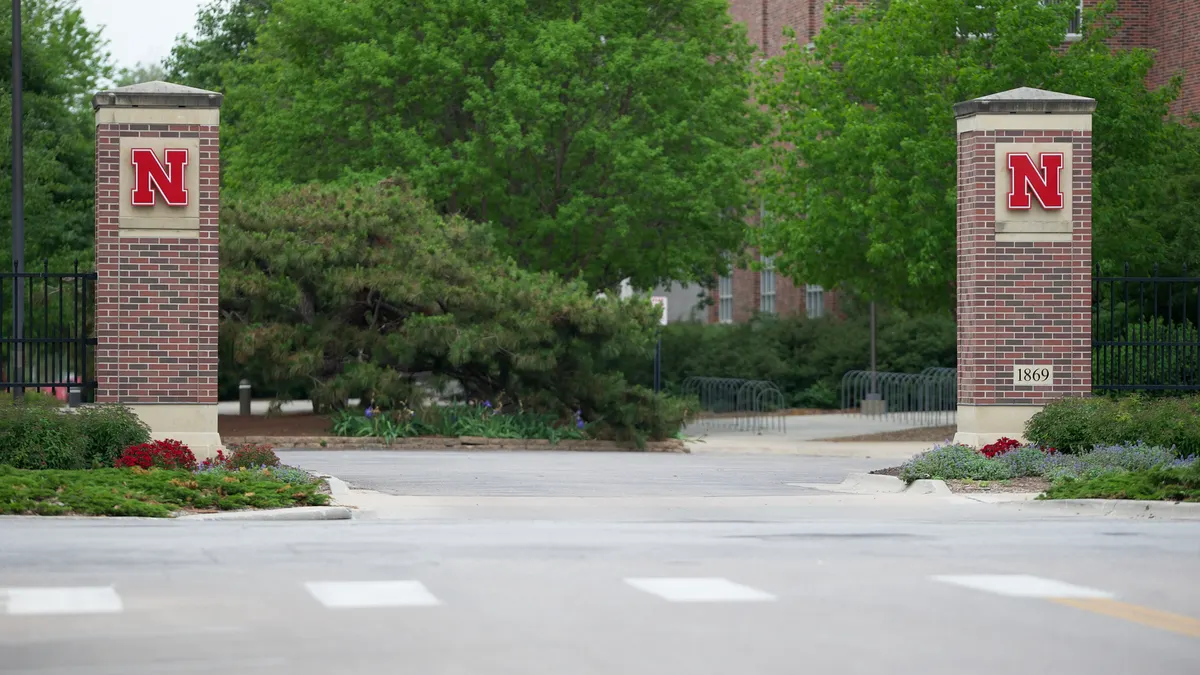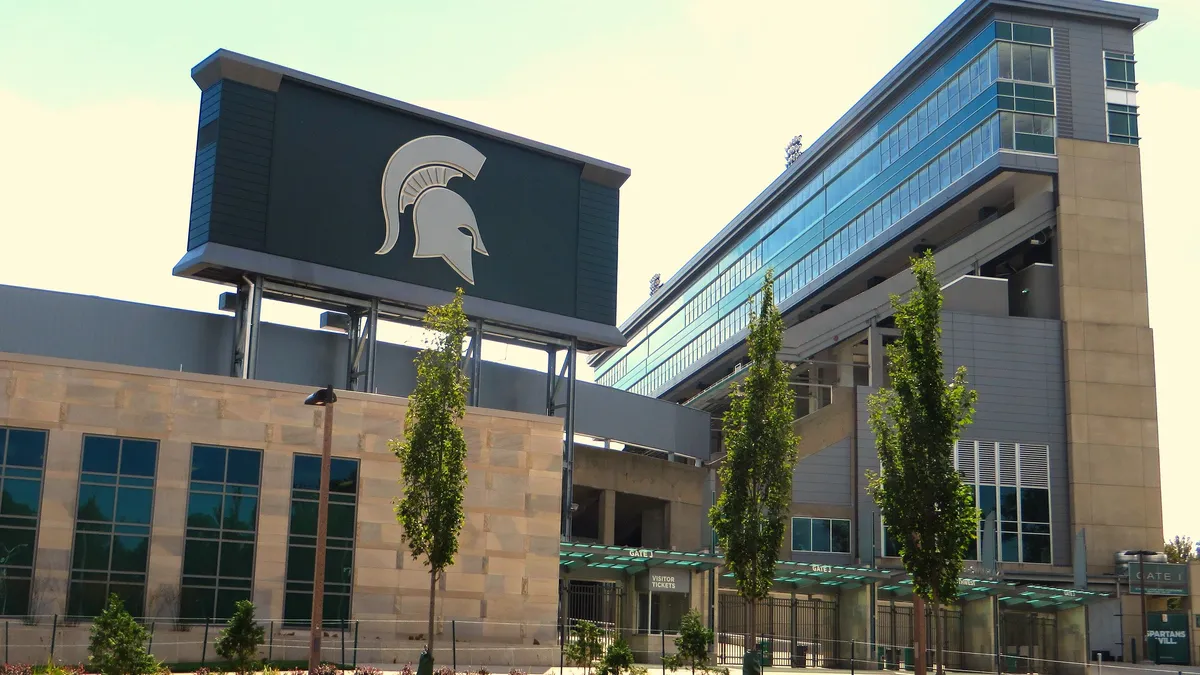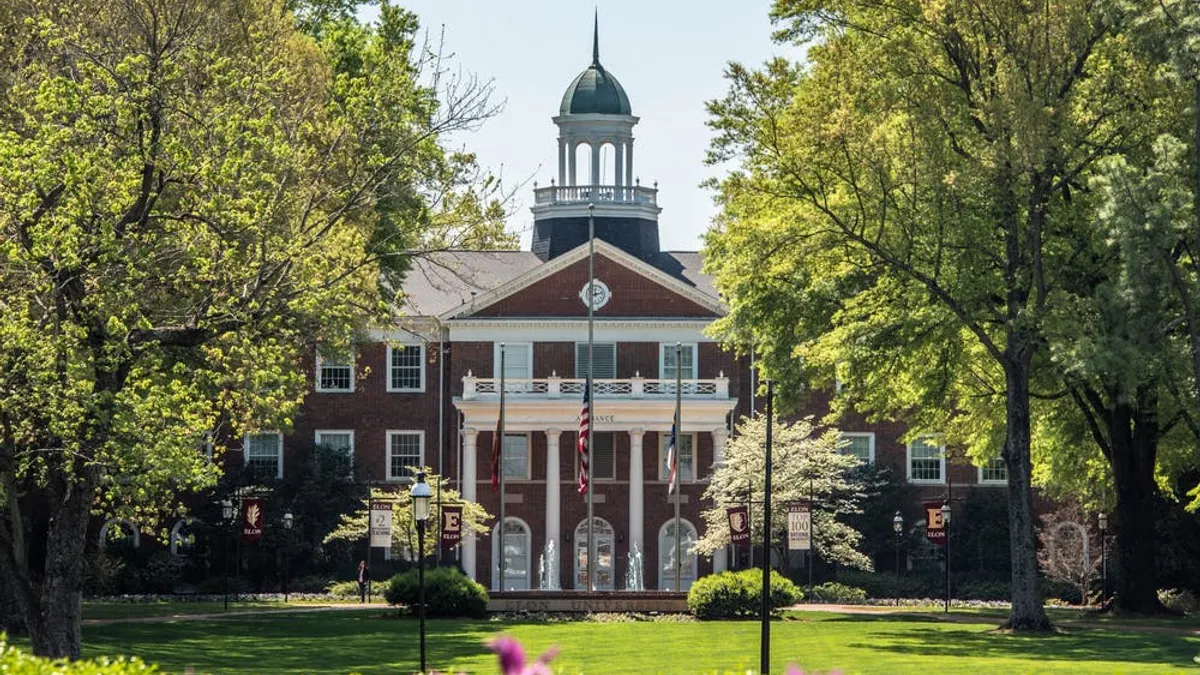Faculty at the University of Nebraska-Lincoln are raising alarms about a plan from top leadership to axe half a dozen academic programs.
At a University of Nebraska system board of regents meeting on Friday, professors from programs on the chopping block voiced concerns with the process administrators used to identify which offerings to cut, pointing to potential problems with the data and alleging a lack of transparency with faculty members. They also questioned the wisdom of cutting programs they say are critical to Nebraska's economy and workforce.
“Faculty units identified for elimination were not provided with an opportunity to have complete and accurate accounting of their contributions to UNL, to their students and to the state,” Sarah Zuckerman, a professor of educational administration, said at the meeting. “As a result, bad decisions are being made using bad information.”
UNL Chancellor Rodney Bennett unveiled a plan in mid-September to wind down six programs and consolidate four departments into two as part of an effort to slash $27.5 million from the university’s budget.
“Despite our best efforts to live within our means, our revenue has not kept pace with expenses,” Bennett said in an August community message bracing the campus for cuts.
Bennett has proposed eliminating degrees in community and regional planning; Earth and atmospheric sciences; educational administration; landscape architecture; statistics; and textile, merchandising and fashion design.
To make determinations, top leaders used metrics designed to measure student demand, instructional efficiency, tuition generation, post-graduation outcomes and research productivity, and then used statistical methods to compare departments, according to UNL.
The university’s Academic Planning Committee, an advisory body, plans to deliver its own recommendation to Bennett later in October, after which Bennett will issue his final decision. The University of Nebraska system’s board of regents is expected to vote on the final plan at a December meeting.
Questions about data quality
Faculty at Friday’s meeting pleaded for more time and consideration from the regents and administration before taking action. Many of them raised concerns about data used to make the program decisions, questioning its quality and contending that faculty lacked access to the information officials used ahead of the proposed cuts.
UNL Chief Academic Officer Mark Button told Higher Ed Dive by email that department leaders participated in a May 15 campuswide meeting about developing the performance metrics used to assess programs.
“Department leaders were provided the detailed analysis of their programs well ahead of Chancellor Bennett’s proposed budget reduction plan,” Button said.
Faculty, on the other hand, say they had far less warning and access to information. Crystal Garcia, a professor of education administration, said she and her colleagues did not learn that the administration considered their department "low ranking" until Sept. 3.
“A week later, on Sept. 11, we were told our department would be eliminated,” Garcia added. “And this process has been touted as open and collaborative.”
Some faculty members circulated a briefing ahead of the regents' meeting that contends there are issues with the data used to determine the cuts, including missing information, "misapplied" formulas and inappropriately used metrics to judge programs and instructor productivity.
Kent Eskridge, a statistics professor, said at the Friday regents meeting that faculty in his department — lacking access to the specific data used by the administration — ran into multiple problems when trying to reproduce the calculations that the chancellor’s office used to mark his department for elimination.
Eskridge described “a systematic overcount of the number of full-time employees in the unit, combined with the systematic undercount of the unit's performance measures for most of the the 10-year period, 2014 to 2023, included in our department’s review.”
When the education administration faculty viewed outside analytics data used by administrators to help determine the department’s research productivity, they found significant flaws in the numbers compared to their own tracking.
Missing in the count were about two dozen peer-reviewed articles, 14 book chapters, over 5,700 citations, and both current and past research grants together amounting to over $2 million, Elizabeth Niehaus, a professor in the department, told Higher Ed Dive. “That's a lot that is just completely absent from the research metrics.”
And the education administration team found issues in teaching productivity metrics as well, such as undercounting students and graduates of the program and not accounting for professors who are given time away from teaching courses to work on grant projects, according to Niehaus.
“It is a quite frankly embarrassing failure at all levels of just basic data analysis,” Niehaus said. “This is why shared governance exists, because we could have helped them.”
Such data quality issues might not matter so much in efficiency metrics and rankings for larger departments, but they can have a distorting effect for smaller programs, Eskridge said.
“My department and I strongly urge the Board of Regents to ask UNL to pause the budget reduction process until these issues are resolved,” Eskridge said, adding that external statisticians should be brought into the process to ensure quality of the data and analysis.
Asked about the concerns voiced by faculty, Button said that data experts in two UNL administrative offices “continue to work closely with all departments regarding questions or concerns about the metrics and the original source data that is being utilized in this process.”
He added that the Academic Planning Committee “independently validated” leaders’ analysis of department performance.
“We have strong confidence in the integrity of the data, and the development of the program metrics benefitted from extensive engagement with campus leaders,” Button said.
‘Unthinkable’ program cuts
Beyond metrics, faculty also pointed to the role their programs play in the state’s workforce, economy and development.
The education administration department has trained “principals, rural superintendents, directors of residence life, community college presidents and more,” Garcia said. “Nearly 300 current UNL staff members obtained their degrees through our department. Cutting our department not only affects students today, it will create a generational educational leadership deficit in the state.”
Sandra Starkey, a professor in UNL’s textile, merchandising and fashion design department, noted her program is the only one like it in the state, which is seeing, in her words, “a revitalized and expanding sector” with increasing employment in textile production and fashion production.
Eliminating the department “would remove Nebraska's only academic pipeline into these industries,” Starkey said. “It would leave our state without the capacity to train the skilled professionals needed to sustain growth, innovation and competitiveness.”
Robert Szot, a graduate student in the Earth and atmospheric sciences department, said the unit helps predict tornadoes and severe weather in Nebraska and plays a critical role in keeping residents safe.
“Our researchers dare to drive vehicles and fly planes into storms that no one else in other universities will dare to do,” Szot said. “It would be unthinkable to cut the department that works directly to keep Nebraskans from all the way over in Ogallala to here in Omaha safe.”
Button noted that the chancellor’s proposal includes a plan to retain “key faculty expertise” in meteorology and climatology via another university unit. Generally, leadership considered qualitative factors such as “overall strength of the program, needs of the state, contributions to extension and public engagement, and workforce needs,” Button said.



















